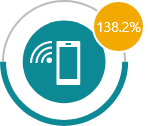BACKGROUND
Philippines accounts for the fourth largest TB burden in the world (WHO Global TB report, 2021). Over 591,000 new cases emerged (i.e., an incidence rate of 539 for every 100,000 people) in 2020, out of which 256,000 cases were notified achieving a treatment coverage of 43%. More than 12,000 people are estimated to suffer from both TB and HIV [1]
Overall, Philippines falls in all the 3 lists of High Burden countries, i.e., high TB, DR-TB and TB/HIV case loads. [2]
The TB case fatality ratio stands at 6%. In 2020, about 5.6% of the children (aged < 5 years) that are household contacts of bacteriologically-confirmed TB cases have also been put on preventive treatment. [1]
Affected by the COVID19 pandemic, country’s TB case notification has majorly dropped in 2020, however, in 2021, the health system has made efforts to revive its TB surveillance practices and the notification is steadily improving to reach closer to previous rates.
Philippines’s updated Strategic TB Elimination Plan (PhilSTEP I) 2020-23 aims to achieve a 50% reduction in TB mortality and 12% reduction in TB incidence by 2023. It lays focus on screening interventions like focusing on maximizing Chest X-ray usage for screening and hence identifying asymptomatic patients (specially at facilities); and strengthening community-based screening through volunteers and health workers. Similarly, to improve TB testing, it intends to broaden the access to GeneXpert testing to conduct DST for all TB cases and leveraging the mandatory notification guideline and involvement of private sector to improve case notification, patient diagnosis and treatment adherence. [3]
Philippines uses Integrated Tuberculosis Information System (ITIS) as the primary tool for TB notification and has started capturing individual records for each patient registered for treatment. All patients diagnosed with TB are encoded in the notification module of ITIS by both private and public health facilities. ITIS has been supported by The Global Fund since its inception in 2016. The system has been developed and managed by KMITS, an integral part of Deptt of Health (DOH). ITIS also allows direct data entry from private TB service providers, which requires them to first get registered as an ITIS user through KMITS.
Additionally, to complement the existing national HMIS data systems, the TB Data from ITIS is extracted and integrated as indicators. ITIS serves as a backbone for all-other digital innovations in TB like CareTB, RaceTB etc. ITIS database hosted and managed by DOH also serves as central data repository for all other TB data systems in the country.
Some of the innovations that leverages ITIS as a foundation are listed below. A more comprehensive list is given later in this report:
ITIS Lite is a lighter version of the platform (both web and mobile based), which is routinely used by Private physicians to report patient data.
CareTB is a complementary tool (fully integrated with ITIS) that aids in patient screening & contact tracing and provides a patient interface for reporting and accessing data.
RaceTB: a fully integrated analytical TB dashboard for different stakeholders to access and review indicators at multiple levels
It is empirical that technology penetration plays a vital role in enabling the evolution of information systems from paper to digital solutions. As of January 2021, the country has nearly 138.2% of the population having a mobile phone, i.e., at least 1 mobile device per person, and the smartphone use is about 98.5%. Even the internet penetration shows decent figures, i.e., approximately 67%. It thus is a good opportunity for the country to leverage the friendliness of its population with digital tools, which can set a strong ground to implement advanced solutions and ensure adequate uptake. [4]
Based on the multi-stakeholder discussions, interviews and independent research, and guidance from the National TB Program, this assessment report is an attempt to describe the current capacity and identified gaps/ challenges in the digital ecosystem of TB surveillance. The report shares strategic recommendations for developing a comprehensive case-based surveillance system in the country while leveraging the existing infrastructure, in-house capacity, and assets.

STATUS OF CASE BASED TB NOTIFICATION
Philippines introduced the case-based notification system ITIS (web app) across the country in 2016, which was relaunched with a mobile app in 2021. Modules for encoders are well developed and the NTP is further focused on enhancing the reporting mechanisms for better program management. The ITIS system also has a Universal search module in place to avoid duplication i.e., before a case is added into the system it does a universal search.
ITIS is also used by private facilities and private physicians. Upon registering, a private facility gets an ITIS account to encode patients, however private physicians are using ‘ITIS Lite’ (a simplified version of ITIS) for reporting patient data to the government database.
The national program values real time monitoring and has established mechanisms to always provide a seamless access of data to their stakeholders. The program managers who are on travel or at sites, can get access to real time information through an external application, the RaceTB dashboard (available in web version and mobile version), which is connected to ITIS.
One of the key strengthens of ITIS platform is the ability to integrate with other innovations like CareTB which allows monitoring of patients through continuum of care including presumptive screening, referral, testing, treatment, outcome as well as help strengthen community-led interventions by empowering patients to access a range of services like information, community forum and reporting etc.
National TB Program (NTP) of the Department of Health (DOH) has always been in the forefront of leveraging digital innovations for improving programmatic outcomes. One of the greatest achievements of ITIS platform is its ability to integrate with other digital innovations be it End TB App Suite or ITIS lite. Datawarehouse developed by DOH and WHO allows bringing all data system under one umbrella.
The End TB App suite [5] which consists of CareTB mobile app fully integrated with ITIS that allows monitoring of patients through continuum of care at field level as well as patient central module for self screening, behavior change communication and Community Led Monitoring (CLM). RaceTB dashboard that facilitates decision making, Lead TB that allows facility supervision and GuideTB eLearning tool.
It is also worthy of mention how CareTB platform was leveraged to create COVID Kaya which is the national COVID monitoring system in Philippines demonstrating the extendibility of these tools for other programs.

ELECTRONIC TB NOTIFICATION DATA COLLECTION AND USE
| TARGET | CURRENT SCALE | COLLECTION TOOLS | DATA TYPE | DATA USAGE | |||||||
|---|---|---|---|---|---|---|---|---|---|---|---|

National Level
|
Data Not Collected at this level
|
ITIS/RaceTB (web and mobile app) | |||||||||

Regions
|
17 | Data Not Collected at this level | ITIS/RaceTB (web and mobile app) | ||||||||

Cities and
Municipalities
|
1634 (144+1490) | 1634 (Encoding of manual data collected from private providers) | ITIS | Case Based | ITIS/RaceTB (web and mobile app) | ||||||

Facility level
|
3600 | 3600 | ITIS, CareTB | Case Based | ITIS/RaceTB (web and mobile app) | ||||||

Community Level
|
NA | Pilot | CareTB | Case Based | No data use at this level | ||||||

CASCADE OF CARE MONITORING
PRESUMPTIVE SCREENING
TB Testing
Treatment Initiation
Treatment Monitoring
Treatment Outcome
Contact Tracing






| KEY DATA VARIABLES | Yes/No |
|---|---|
| Demographic details (Age, DOB, Gender) |

|
| Address and contact details (Country, Division, District, House address) |

|
| Geolocation (GPS coordinates of the household) | |
| Contact details (Phone number/Mobile number, WhatsApp, Email etc.) |

|
| Health Facility address |

|
| Type of health facility (Public, Private etc.) |

|
| Site of TB (Pulmonary, Extra-pulmonary) |

|
| Type of diagnostic test (Microscopy, GeneXpert, TruNaat, CXR, etc.) |

|
| Date of test result |

|
| Drug susceptibility (DSTB, DRTB) |

|
| Treatment Regimen |

|
| Treatment start and end date |

|
| Co-morbidity (HIV, Diabetes, COVID-19 etc.) |

|
| Treatment monitoring/adherence |

|
| Treatment outcomes |

|
| KEY INDICATORS | Yes/No |
|---|---|
| Presumptive screening (proportion) |

|
| Treatment initiation (proportion) |

|
| Treatment monitoring/adherence | |
| Treatment outcome (proportion) |

|
| Spatial distribution of TB notification |

|
| Age-group & sex wise aggregate numbers and proportions notified |

|
| Basis of diagnosis wise aggregate numbers and proportions notified |

|
| Type/site/drug resistance wise aggregate numbers and proportions notified |

|
| Provider source-wise aggregate numbers and proportions notified |

|
| Comorbidity wise aggregate numbers and proportions notified |

|
| Key-population wise aggregate numbers and proportions notified | |
| Estimate/Target wise notification/treatment coverage (proportions) |

|
| Provider-type disaggregated treatment outcomes (proportions) |

|
| Comorbidity disaggregated treatment outcomes (proportions) |

|
| Key population disaggregated treatment outcomes (proportions) |
 Digital
(aggregated)
Digital
(aggregated)
STATUS OF ELECTRONIC CASE BASED TB SURVEILLANCE
Electronic System For Case Based TB Notification
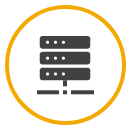
ITIS / ITIS Lite, Care TB
Lowest Unit For TB Notification Digitisation
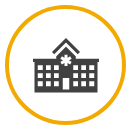
Facility level
Stage Of Notification

TB Diagnosis (confirmed cases)
Level Of Access And Use Of TB Notification Data
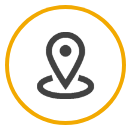
Facility level
Private Sector Notification
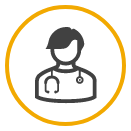
Private health facilities that have an access, use ITIS Lite to report data, while others submit individual manual records for entry by TB coordinators
Frequency of digitization of TB notification
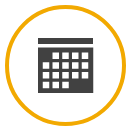
Real time (can be upto Quarterly)
Mode Of Follow-Up With Notified Cases
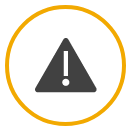
Physical visits and Phone calls by Community Health Workers; Emails and SMS – ITIS notifications; CareTB patient module
Scale Of Implementation
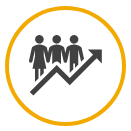
National level
Contact Tracing For TB Notified Cases
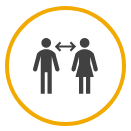
Yes (ITIS and Care TB)
Multi-Channel Enablement
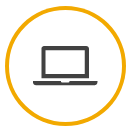
Web and Mobile application for ITIS, Care TB Mobile app
Govt. order for mandatory TB notification
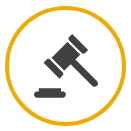
Yes
PRIVATE SECTOR NOTIFICATION
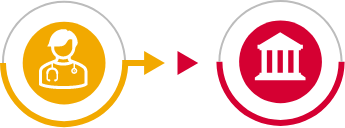
Nearly 20% of the total TB case notifications are contributed by the Private sector. The private facilities that have access to ITIS (provided by KMITS) use ITIS / ITIS Lite app to report individual cases, while other private practitioners submit manual individual records to the City/Municipal level for data entry by TB coordinators.
COUNTRY IT CAPACITY
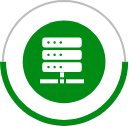
Country Server
The ITIS application is hosted centrally at KMITS data center of the DoH
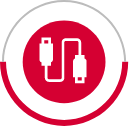
Interoperability
Data export and APIs are available in ITIS and being used for integration with the End TB app suite and other tools
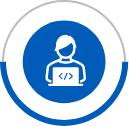
Country IT team
Limited capacity - DHIS2 experts with CMU team. Technical support sought from partner agencies.
CURRENT RESOURCES AVAILABLE
USAID’s 2020 TB budget allocates USD 14.5 Million to support TB initiatives of the country in line with NSP 2020-23.
In June 2021, USAID has announced another USD 57 million for supporting urgent tuberculosis recovery efforts of seven countries, which includes Philippines.
The Global Fund has been supporting the development of ITIS, hardware and HR; and in the year 2021, USD 37 million has been provided to support Philippines in fighting COVID-19, adapting HIV, TB and malaria programs, and strengthening systems for health under C19RM.

MILESTONES ACHIEVED AND ROAD MAP
2011
Development of ITIS as a common system of case based TB notification.
2003
Implementation of an Electronic Medical Record system for TB reporting (later replaced by the use of eTB manager for DR-TB)
2015
ITIS roll-out at national level for both DS-TB and DR-TB notification
2012
Pilot testing of ITIS in 3 regions – NCR, Region III and Region IV
2018
Implementation of NTP directory of facilities (public and private) in ITIS, Introduction of ITIS Lite web version
2017
Implementation of laboratory testing module in ITIS
2019
Pilot and implementation of ITIS Lite mobile app for Private sector, Development of inventory module in ITIS
2020
Pilot and implementation of ITIS helpdesk admin module, Development and introduction of ITIS mobile full version
2021
Integration of ITIS with PViMS, PMIS, GxAlerts and LIS/Data2Care. Enhancement and scale-up of End TB app suite implementation. Pilots and integration with Digital Adherence Tools (99DOTS, Pillboxes and VideoDOTS)

OTHER COMPLEMENTING DIGITAL TOOLS
| Purpose | Tools | Channel | Developed By | Supported By | Scale |
|---|---|---|---|---|---|
| Digital Adherence | 99 DOTS VideoDOTS Smart Pillbox evriMED CareTB | Mobile application Video conferencing Smart Med Containers Web application Mobile and web app | Everwell SureAdhere Everwell WisePill Dure Technologies | UnitAid and KNCV UnitAid, J&J, KNCV UnitAid and KNCV USAID WHO, URC | Pilot implementations |
| Logistic Management System | QuantTB PMIS | Web Application Web application | MSH DOH | USAID USAID | Pilot National scale |
| Laboratory Information Management | GeneXpert (ASPECT) GxAlerts+ITIS Data2Care C360 C360+ITIS | Web Application Web Application Web Application Web Application Web Application | SystemOne SystemOne Savics Cephield Cephield, DureTech | SystemOne SystemOne USAID The Global Fund WHO, FHI360 | Pilot implementations |
| Community Led Monitoring (for contact tracing) | CareTB (OneImpact adapted in End TB app suite) | Mobile Application | Dure Technologies | Stop TB Partnership,WHO | Pilot |
| Contact Tracing | CareTB and ITIS ConnecTB | Mobile and web app Mobile and web app | Dure, KMITS Yano Tech | WHO, The Global Fund USAID | Pilot implementations |
| eLearning | GuideTB DOH academy |
Web application Web application | Dure Technologies DOH | WHO USAID, The Global Fund |
National scale implementations |
| Supervision and monitoring | LeadTB | Mobile application | Dure Technologies | WHO | National |
| Pharmacovigilence | PVIM | Web application | MSH | USAID | Pilot |

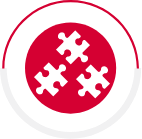

KEY CHALLENGES

The staff designated at the data entry points are shared resources with other programs and are inadequately trained, which causes concerns on data quality and delays in reporting.

With the internet conditions being very unreliable at several facilities, real-time case-based data entry remains a challenge.

The lack of devices at sub-national level limits the timely data entry as well as the data usage for decision making.

With the inconsistency of reporting frequency at different reporting units, complete real time data is not received and in turn, the analytical report outputs are generated on a quarterly frequency, that leaves less scope for data driven actions.

Another challenge faced is duplication of records. There has been an attempt to integrate PhilHealth as a universal identifier for reducing duplication.
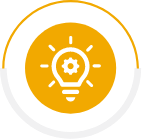
NTP VISION
- ❖ Transitioning to complete real-time case-based data reporting from all facilities.
- ❖ Extending presumptive screening and household contact tracing at outreach level.
- ❖ Leveraging predictive modeling and other data science tools for better decision making and planning
- ❖ Enabling real-time integration with Laboratory information tools like GxAlerts.
- ❖ Functionality of instant notifications and automated translation of data to actionable with Artificial intelligence.
- ❖ Scale up of EndTB suite and innovations with AI and Alert systems, Decision Support systems, integration with Telecare services
- ❖ Strengthen and scale Community Led Monitoring systems like CareTB patient app (built on OneImpact platform).

RESOURCES NEED
Based on multi-stakeholder discussions, country feedbacks and recommendations for full-filling country’s vision, we have put together an estimated investment requirements and areas needing support for provisioning of a comprehensive case based digital TB surveillance system
Hardware and Infrastructure :

Mobile Devices (for data collection):: Philippines has 3600 facilities and to provision mobile device for every facility for case-based TB surveillance, USD 540,000 will be needed assuming USD 150 per mobile devices.

Tablet (for data use): : Philippines has 1634 cities and municipalities and 17 regions. To promote active data use, each city, municipality and region should be given a tablet which would cost roughly around USD 330,200 assuming USD 200 per Tablet devices.

Internet: In case WiFi is not available in each facility, then mobile internet cost of around USD 1,890,360 should be considered for 3 years (assuming USD 100 mobile data cost for a year per facility, district & regional user).

Server: Based on the current volumes of new cases, Philippines would need an investment of USD 40,000-50,000 for next 3 years for server and server maintenance.
Note: Existing devices available through other health programs can be leveraged. In that case, the above-mentioned costing can be accordingly considered.
Software Development :

Based on various multi-stakeholder meetings and given the fact Philippines already have a strong foundation of a case-based reporting nationally, around USD 700,000-800,000 should be budgeted for a comprehensive TB surveillance system and analytical dashboard for data use.
Capacity Building and Implementation :

After the software development, a dedicated pool of technical resources will be needed to support platform administration, data management and support. A team of 4- 6 skilled resources attributing to a cost of around USD 48,000-72,000 per annum should be budgeted (or USD 144,000-216,000 for 3 years assuming USD 1,000 per month per resources). Additionally, reskilling of the current IT team should be budgeted.

Training: This would involve training material development and onsite and remote training of the trainers. A 1-day training should be planned for each of the 1634 cities and municipalities, which could cost roughly USD 100 per training amounting to USD 163,400. Also, a dedicated trainer should be budgeted in case there is none. E-training options with necessary modules also need to be considered.
TOTAL investment of around USD 4 – 4.5 million for 3 years will be needed for further strengthening and maintaining a comprehensive case-based digital TB surveillance system for Philippines.
Disclaimer: The above budget is a function of number of facilities, districts and regions and expected volume of data. This only provides a ballpark figure of what is needed in terms of budget.

The National TB Control Program has gone a long way in its information system. Before the Integrated TB Information System (ITIS) was available, we were only able to complete our annual reports after two years. Data generated were used to plan our activities and to forecast the needed commodities. You can just imagine the several assumptions that we have to make to ensure that the numbers will almost be correct. Now that ITIS is available, we have our data after a month of the end of every quarter. We look forward to having accurate and real time data to ensure that services needed by the patients and challenges encountered by the program are addressed promptly. This will make our goal of providing patient-centered care a reality as we move towards Universal Health Care.


Philippines

Anna Marie Celina G. Garfin, MD|Former NTP Manager

Recommendations
Following are some of the key recommendations suggested based on the findings of this assessment of country’s digital ecosystem and infrastructure:

Strategic Costing Plan
In order to further strengthen and develop to a fully functional digital TB surveillance system, a comprehensive costed action plan for necessary enhancement may be prioretized.
Based on NTP’s vision and the recommendations for improvements, the plan should clearly define targets with actionable interventions and funding requirements supported with a detailed work plan along with timelines. The plan will help the country to assess and monitor the progress to ensure that any risks can be duly mitigated.
Tentative timeline: Month 0-1

Device Procurement
One of the limitation highlighted by NTP is the need to improve the sub national infrastructure for direct data entry and data use from the facility level. To streamline this, procurement, distribution and maintenance of the required data entry equipment like laptops, mobile/tablet devices should be done on an urgent basis. Improving the current infrastructure at the facilities is crucial for a complete transition to real time notification and information use.
Tentative timeline: Month 0-3

Mobile App
One of the challenges reported by the NTP is the infrastructure inadequacy and lack of availability of real time data for stakeholders from reporting sites with less connectivity. One effective way to overcome this is to support the current data collection processes by scaling CareTB platform and ITIS lite platform for enabling field based real-time data collection through the entire continuum of care starting from presumptive screening, referral, testing, treatment, treatment adherence, outcome.
The mobile app should have additional features like offline mode, GIS capabilities, encryption, version management etc. and should be extended for use even for aggregate data reporting of stocks or other datasets, specially from facilities with limited IT infrastructure.
This would also ensure that the data structures are consistent. Also, the app should be supported with a configurable set up to support any updates/changes to the program. Additionally, the app should use standard mobile framework with Java, Postgres, React and Android, which can be easily supported by country IT teams and compatible with the ITIS system
Following the standard best practices of mobile application development can make this a more robust solution.
Tentative timeline: Month 6-12

Data Use
The NTPs plan clearly emphasizes on the importance and need for improve data use. For a country like Philippines, where already a solid IT foundation exists, the aim should be on data use, which is not only crucial at the National or State or district level in aggregated forms, but actual impact of data use is best materialised when used by the local health staffs like including outreach workers. Additionally necessary job aids/line lists etc can be auto generated that could make the job easier for TB staff and supervisors.
The recommendation to improve data use is by enhancing the existing dashboard and analytical platforms like RaceTB and CareTB dashboard that not only offers aggregated indicators across the cascade of care but also provide granular patient level data across continuum of care for programmatic decisions. The local dashboard for the facility level health staff and outreach workers should have risk profiling and daily scheduler for following up and managing individual TB cases better including real-time monitoring of treatment adherence.
Advanced data science and AI based predictive modelling should be leveraged for forecasting demand for testing and treatment and help planning resource utilisation better, or to predict the risk of death and being loss to follow up to provide differentiated care to those patients.
The data use should also use GIS based hotspot mapping and AI based hotspot predictions to pre-empt any disease outbreaks.
It is also recommended to use best of the breed tools like Tableau , Power BI which offer these features. APIs can be generated and connected with these applications, and these can be used as an extended analytical component of the data analysis framework. [6]
Tentative timeline: Month 3-12

System Integration
One of the challenges highlighted by NTP is the leveraging the data collected from the multiple sources into the main DHIS2 systems as a central system for effective use.
The current ITIS platform and infrastructure needs to be extended to support integration with external systems like Telecare platforms, GenXpert, TruNat, Digital X-Ray outputs, Smart Pill boxes and other adherence tools (99DOTS, ConnectTB, etc) which help in using the data effectively for the patient continuum of care as highlighted by the National program. It is also recommended that National ID systems like PhilHealth system should be integrated with the ITIS system for eliminating duplication of records.
Recommended exchange / ETL tools like Talend , Informatica which include these features make the data management task much easier and simultaneously improve data warehousing should be evaluated. [7.1] , [7.2]
The data exchange process should follow and comply with FHIR , GDPR standards for more secured and seamless data exchange.
Tentative timeline: Month 12-18

Development of more comprehensive eLearning tools
A national IT system has its own capacity and training requirements, which creates a need for development of a comprehensive eLearning module allowing all health staffs involved in data collection process for training not only on the ITIS application but also on the latest manual of procedure and continued medical education on TB care.
To address the challenges with periodic training of facility level staff to orient them on using ITIS (web or mobile app) for direct data reporting, the DOH must engage in development of a comprehensive eLearning module for app training. Training tools like Moodle [8] built on standard LMS framework can be reviewed for application rollouts.
AI based decision support system for TB care provider should also be built into the eLearning module making it the one stop shop for all health workers.
Tentative timeline: Month 0-3

Scale up of Patient Interactive Systems and CLM platforms
Establishing a direct and secured mechanism for engaging with patients and the engaging community in monitoring TB interventions has potential for drastic improvements in tracking lost to follow-up patients, reducing stigma and improving care & service delivery.
Auto generation of notification and messaging using the CareTB patient module and by communication channels like Social Media channel, IVRS and SMS outbound messages should be further scaled to cover all patients receiving services.
CareTB CLM platform (built on OneImpact) should be further enhanced and scaled to maximise reach and engagement with patient communities at the last mile and to strengthen the efforts of the civil society organizations and communities TB peer support network groups with the end objective of supporting patient not only with their programmatic needs but also social and human right needs as part of the broader CLM guidelines in the country
Tentative timeline: Month 6-24

Data Quality
As part of the standard practice, the application(s) / solutions should follow a set of standard data quality mechanisms or the Data Quality Assurance (DQA) framework which would help in improved data credibility and use.
UIC Code: Having a centralized Unique Patient ID system or leveraging existing national ID supported with an improved search functionality can help drastically reduce the duplication of case-based records. Integration with PhilHealth ID can also help reduce duplication. This should be generated automatically through the case-based TB surveillance system.
Data access control is another such DQA measure that will regulate user’s access to only relevant metadata. It will involve the principle of least privilege (POLP), i.e., user’s access will be determined based on their role in the project. POLP will define and limit what data they have access to and who has that access.
Tentative timeline: Month 6-18

Strategic Technical Recommendations
Application Upgrades including Server Augmentation & Infrastructure Upgrades : To make sure that systems implementation and scale up of application is supported well, the key need is to have a long-term strategic plan that would cover the technical and operational objectives.
The strategy recommended would cover the following core areas
✓ Technical Upgrades: Based on the architecture, the upgrade would be done with the database, a middleware system, the operating system or the hardware.
Additionally, the architecture should support the integration layer which would be needed for data exchange with other national / external systems. The technologies that need to be brought in and the areas of inter-connection need special focus.
Recommended data system architecture would include updating the version of the current DHIS2 to 2.34 which offers better features on data management , encryption and exchange standards.
Apart from this version 2.34 also supports compliance to GDPR standards and offers more controlled data encryption practises. [17]
✓ Performance Optimisation & Testing : To support the national scale up and implementation strategies it is very essential to have system(s) and application testing done to enable a reliable platform and which also helps in architecture updates and augmentation.
While core teams from the user community who are involved in the testing learn and automatically get trained, Automated System and Application Testing tools like Selenium and Appium also may be considered. Load Testing tools which helping in data base sizing and planning need to be adapted for effective planning. [9]
✓ Application & System Security Audit
To strengthen the current systems framework and ensuring long term sustenance it is important to have regular evaluation of the security of the information and systems by measuring how well it conforms to an established set of criteria.
These would also include developing a framework which should outline policies in line with recommended standard policies like HIPAA [10.1], [10.2] to cover
• Patient Data Management
• Server & Infra guidelines
Apart from application measures offered by offered by ITIS and Care TB [14] for patient data security , hosting solutions offered from Azure also cover these as part of their deployment options which can be considered as part of systems hosting. [11]
ACKNOWLEDGMENT
We thank the National TB and Leprosy Program Manager, Dr. Anna Marie Celina G. Garfin and the entire team for participating and engaging in the assessment. We would also like to extend our gratitude to Ms. Donna Geviola for providing valuable insights into Philippine’s vision for creating an advanced case-based TB surveillance and notification system.
CONTACT DETAILS
National Tuberculosis Control
Program,
Department of Health
San Lazaro Compound, Tayuman,
Sta. Cruz, Manila
Philippines 1003
Telephone : (632) 8651-7800
REFERENCES
- TB Data References : https://worldhealthorg.shinyapps.io/tb_profiles/?_inputs_&entity_type=%22country%22&lan=%22EN%22&iso2=%22BD%22.
- TB Data References : http://www.stoptb.org/countries/tbdata.asp.
- TB Data Reference : https://www.usaid.gov/sites/default/files/documents/Bangladesh_Narrative_TBRM21_TBDIAH_Version_Final.pdf.
- Digital Landscape : https://datareportal.com/reports/digital-2021-Philippines.
- DHIS2 Power BI : https://community.dhis2.org/t/dhis2-to-powerbi-connector-is-ready-check-out-the-video-test-it-use-it-and-give-us-feedback/37043
- End TB App suite: https://ntp.doh.gov.ph/resources/downloads/endtb-appsuite
- System Integration Tools ( Talend , Informatica ) : https://www.talend.com/index.php, https://www.informatica.com/
- Application Training Tool : https://moodle.org/
- Performance Tools ( Selenium , Appium ) : https://appium.io/, https://www.selenium.dev/
- HIPAA Compliance Framework : https://www.hhs.gov/hipaa/for-professionals/security/laws-regulations/index.html, https://www.hipaajournal.com/considered-phi-hipaa/
- Azure Hosting Services : https://docs.microsoft.com/en-us/azure/compliance/offerings/offering-hipaa-us

